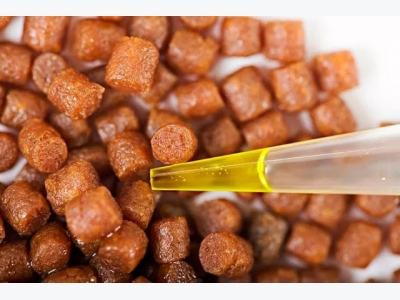A genetic means of boosting omega-3s in salmon

Some salmon are better able to systhesise the long chain omega-3s EPA and DHA than others, according to new research which could have major impacts on the quality of farmed fish.
Feed has the greatest impact on the fatty acid composition in salmon. However, genetics also plays a role. © Jon-Are Berg-Jacobsen
The research is part of the project “Genomics of omega-3 in Atlantic salmon”, a four-year NOK 10 million project funded by the Research Council of Norway, with project partners including SalmoBreed, the University of Southampton, Nofima and The Norwegian University of Life Sciences (NMBU).
If successful it could help to boost the omega-3 content in farmed salmon, despite the declining marine content in their feeds. The current element is being undertaken by doctoral student Siri Storteig Horn, at Nofima, who has studied the heritability of individual fatty acid synthesis in the SalmoBreed breeding population. She has found major differences.
“The main marine omega-3 fatty acids in salmon are EPA and DHA. Our findings show that the muscle content of EPA has low heritability, while DHA has quite high heritability, estimated at 26%. In other words, genes determine 26% of the variation in fatty acid content in muscle tissue, meaning there is great potential in increasing this fatty acid through selective breeding. The results also indicated that a fish that has a high level of EPA does not necessarily have a high level of DHA,” says Horn.
“We contribute with fish, pedigree, genotypes and phenotypes to this project and we also spent a week together during test slaughter in October 2015 to collect data for this project. Siri has recently submitted one paper to GSE and one to WCGALP,” says Borghild Hillestad, Genetics Manager at SalmoBreed.
Changing diets
In the last decade, production of Norwegian farmed salmon has more than doubled. Since the supply of fish meal and fish oil is limited, their diet has also changed and salmon feed now consists of roughly 70 per cent plant proteins and oils, leading to a decline in the level of the healthy omega-3 fatty acids in the fish – currently around one gram of EPA and DHA are found in every hundred grams of salmon fillet.
However, salmon can actually increase the amounts of these fatty acids in their bodies, by converting shorter chained fatty acids from plants into longer chained marine omega-3 ones. This trait is probably linked to the fact that they spend the first part of their lives in fresh water, where they need to produce marine omega-3 fatty acids themselves, because they do not have access to them in the food they eat. In salmon farming, on the other hand, EPA and DHA are provided in the feed throughout the whole lifecycle.
Previous research has shown that some salmon families have higher levels of these crucial long-chain polyunsaturated fatty acids (PUFAs) in their muscle tissue than others. These differences can be used to breed salmon that are more effective at producing marine omega-3 fatty acids themselves.
It is currently very time-consuming and expensive to measure the fatty acid composition of the high number of individuals needed for breeding. Scientists at Nofima are working to develop a new and faster measurement technique.
“A new rapid measurement method will benefit salmon breeding companies if they want to select fish with increased levels of marine omega-3,” says Horn.
The next step
The next step in Horn’s doctoral work is to determine which genes and gene variants influence the fatty acid composition of salmon muscle. This will provide more detail about the physiological processes that affect the fatty acid composition in muscle, and contribute to more efficient implementation in breeding programmes.
“We know that this is a heritable trait, meaning it is possible to increase omega-3 content through selective breeding,” explains Horn. “To learn how omega-3 content is regulated, we need to study which genes are involved. Our data show that the production of marine omega-3 fatty acids and their deposition are two different traits.”
Có thể bạn quan tâm
 Bluefin quota disappoints EU fishermen
Bluefin quota disappoints EU fishermen EU fishermen’s representatives have expressed their disappointment that the recommended increase for the Atlantic bluefin tuna quota is not higher over the next
 Chinese direct shrimp imports from Ecuador overtake Argentina
Chinese direct shrimp imports from Ecuador overtake Argentina China’s number one origin of direct shrimp imports with its farmed vannamei, after a decrease in China's direct imports of Argentine red shrimp
 China slashes customs duties for frozen Atlantic salmon, shrimp, abalone
China slashes customs duties for frozen Atlantic salmon, shrimp, abalone China last reduced import tariffs for seafood products, including coldwater shrimp, crab, pollock and six species of frozen tuna, at the beginning of this year.